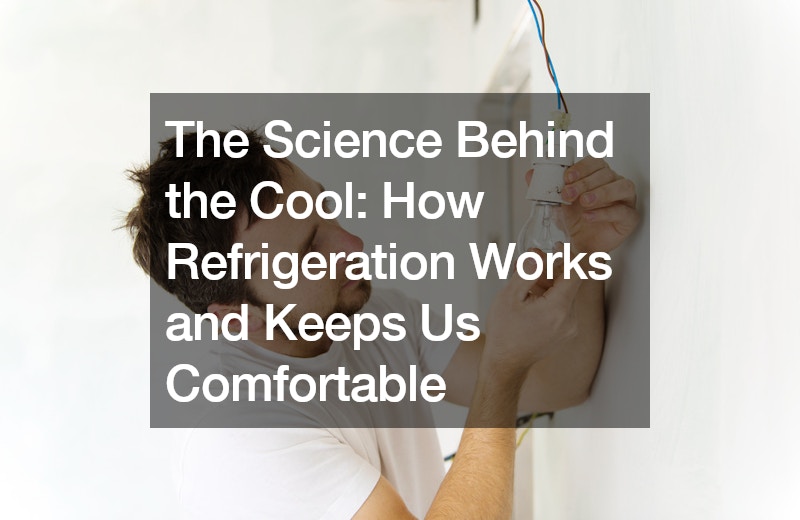
Ever wondered how your refrigerator keeps your food fresh and your air conditioner provides a cool escape from the summer heat? The answer lies in a clever process called the refrigeration cycle, a marvel of physics and engineering working in perfect harmony. This cycle utilizes a special substance called a refrigerant to transfer heat from a cold space (like the inside of your fridge) to a warmer environment (like the outdoors).
The Key Players: Components of a Refrigeration System
Several key components work together to make the refrigeration cycle function:
Compressor: The heart of the system, the compressor is essentially a powerful pump. It draws in low-pressure refrigerant vapor and compresses it, significantly increasing its pressure and temperature.
Condenser: Acting like a radiator, the condenser is located outside the unit (in a fridge) or building (in an air conditioner).
Hot, high-pressure refrigerant vapor travels through the condenser coils, where a fan blows cooler outside air over them. This air carries away the heat from the refrigerant, causing it to condense back into a liquid state.
Expansion Valve: Also known as a throttle valve, this component plays a crucial role in regulating the pressure and temperature of the refrigerant. As the high-pressure liquid refrigerant passes through the expansion valve, the opening restricts the flow. This sudden pressure drop causes the refrigerant to expand rapidly, resulting in a significant decrease in temperature.
Evaporator: Located inside the refrigerator or air conditioning unit, the evaporator is a set of coils filled with the now cold, low-pressure refrigerant liquid. In a refrigerator, a fan circulates warm air from the inside over these coils. The refrigerant absorbs heat from the warm air, causing it to evaporate back into a gas. This process cools the air, which is then circulated back into the fridge or air-conditioned space.
The Cycle Continues: Refrigeration in Action
The refrigeration cycle is a continuous process. Once the refrigerant evaporates in the evaporator, it’s drawn back into the compressor, completing the loop. The compressed hot gas travels to the condenser, where it releases heat to the outside air, condenses into a liquid, and then continues the journey through the expansion valve and evaporator to absorb more heat. This cycle repeats itself continuously, maintaining a cool environment within the refrigerator or air conditioner.
Beyond Food Storage: Applications of Refrigeration Technology
While refrigerators are essential for keeping food fresh, the refrigeration cycle has numerous applications beyond our kitchens. Here are some examples:
Air Conditioning: Homes and buildings utilize air conditioners that function similarly to refrigerators. The cool air produced by the evaporator is circulated throughout the space, providing relief from hot summer temperatures.
Freezers: Freezers operate on the same principle but employ colder coil temperatures to achieve freezing conditions ideal for long-term food storage.
Dehumidifiers: These appliances use refrigeration technology to remove moisture from the air. The evaporator condenses water vapor from the air, collecting it in a container, while the cooled, dry air is circulated back into the room.
Commercial Refrigeration: Supermarkets and restaurants rely on large-scale refrigeration systems to keep food chilled and ensure product safety.
Innovation and Efficiency: The Future of Refrigeration
The field of refrigeration technology continues to evolve, with a focus on improving efficiency and minimizing environmental impact. Here are some advancements shaping the future:
Natural Refrigerants: Traditional refrigerants can contribute to greenhouse gas emissions. The development of safe and efficient natural refrigerants offers a more environmentally friendly alternative.
Variable Speed Compressors: These compressors adjust their speed based on cooling demand, leading to significant energy savings.
Improved System Design: By optimizing component size and placement, engineers can create more efficient refrigeration systems.
The science behind refrigeration is a testament to human ingenuity. By understanding the principles of heat transfer and pressure manipulation, we’ve created a technology that keeps our food fresh, regulates our indoor temperatures, and contributes to various vital applications. As the field continues to develop, we can expect even more efficient and sustainable refrigeration solutions in the years to come.
.
